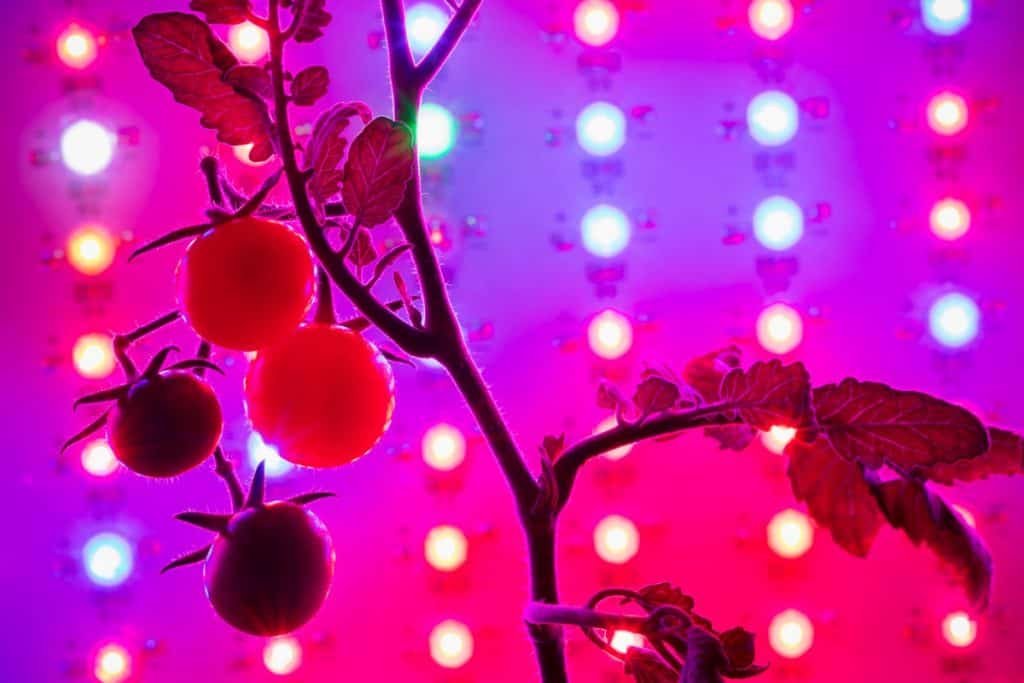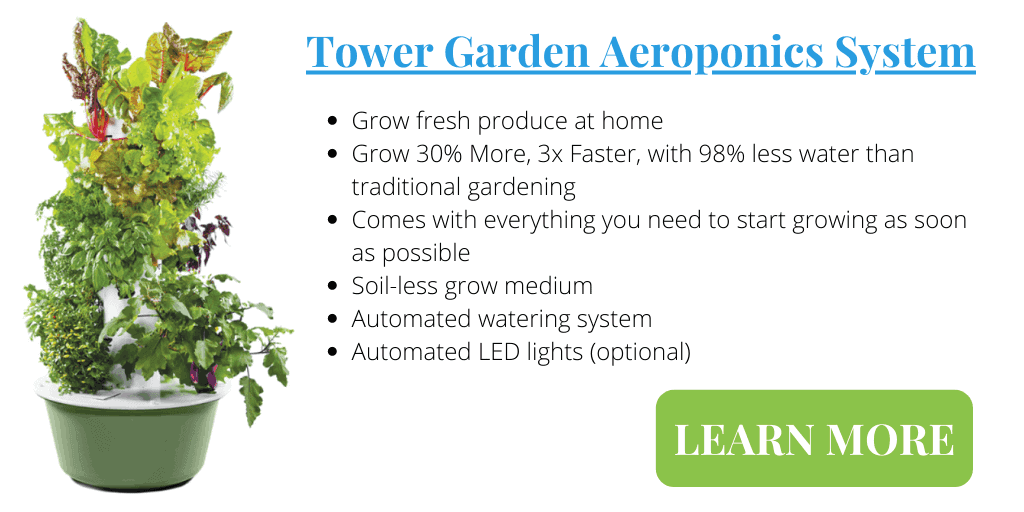Whether you’re doing an indoor hydroponic, aeroponic, or traditional soil garden, you’ll have to provide the right amount of artificial lighting for your grow space. There are different lighting requirements for each type of plant whether you grow under LED, Fluorescent or HID grow lights.
The number of grow lights you need is determined by the space you want to light, the number of plants you would like to grow, and the type of lights you use, and the height of the light above the plants. For LED light Panels:
- 220w PAR 455 – covers two plants with an area of 6sqft (1.8meters) at the height of 24 inches (60 cm)
- 320w PAR 645 – covers four plants during the fruiting stage with an area of 12 sqft (3.6 meters) at the height of 3ft (1 meter)
- 605w PAR1131 – covers ten plants with an area of 21 sqft (6.4 meters) at the height of 3ft (1 meter)
As mentioned, there is more to selecting your grow lights than just the wattage. We break down the other aspects of selecting the best system for indoor growing below.

Calculating Grow Light Coverage
When deciding on how many lights you need for your growing area, you should consider the light spectrum (light color), PAR (photosynthetically active radiation), and lumens (light intensity) required. The higher the lumens rating of the bulb, the brighter the light will be produced by the bulb.
Get more information on PAR values, light intensity, and light spectrum in our Complete Guide To Hydroponic Lighting
As a general rule, when you are trying to determine the number of growing lights you need, only calculate the amount based on the growing area you are using and not the room’s size.
If your room size is 5 x 5 sq. ft (1.5 x 1.5 meters), but the growing bed is only 3 x 3 sq. ft (1 x 1 meter), then you do not need to light up the entire room, only the area over the growing bed.
To determine how much light your plants will need, there are two factors to consider.
- Plant coverage. The amount of potential light each individual plant will receive.
- Canopy coverage. The amount of light that will be spread over all the plants in the bed.
- Full Spectrum: Barrina LED grow lights 4ft provide indoor plants with full-spectrum sunlight...
- Super Bright and High PPFD: Consuming only 252W with 1152 LEDS totally, replace 1400w general...
- Easy Installation: With included tape, clips and cable ties, you could install the lights by...
3 Steps For Selecting grow Lights
- Measure the size of the area that you will be using. If you are growing your plants indoors, make sure that you have enough space and do not overcrowd the plants. If you are going to use a grow tent, buy the correct size for the number of plants that you have. You need to measure the height, width, and length of your grow space to get an accurate measurement for grow light coverage and strength.
- Decide which plants you will be growing and what the Lumen/PAR requirements for each one are. Remember, each plant has its own unique requirements, so you may need more than one growing area.
- Choose a grow light or lights depending on your requirements, and decide where to place or hang the lights according to the coverage needed.
If you want to get the most efficiency out of your indoor growing and lighting the Tower Garden vertical aeroponic growing system is the way to go. I have two towers in my home office and they grow most of the greens, herbs, and vegetables my family needs. The vertical tower can grow 20+ plants in the space of a coffee table while using less water and energy than other growing methods.

What Size Lights Will I Need For My Grow Room?
Once you have calculated your growing area’s size, you can figure out the necessary wattage by determining the Lumens/PAR requirements.
Coverage from a single HID grow light – sizes and strengths:
- 400w HPS light provides 55 000 lumens – enough coverage for two plants
- 400w MH light provides 36 000 lumens – enough coverage for two plants
- 600w HPS light provides 90 000 lumens – enough coverage for four plants
- 600w MH light provides 61 000 lumens – enough coverage for four plants
- 1000w HPS light provides 130 000 lumens – enough coverage for six plants
- 1000w MH light provides 110 000 lumens – enough coverage for six plants
Fruiting vs Non-Fruiting Grow Lights
There are many ways to grow your plants with artificial light. The growing style you are using will determine the amount and type of grow lights you will need. Each plant also has different needs and requires different amounts of sunlight and darkness to germinate, grow and fruit.
There are different requirements for fruiting and non-fruiting plants.
- Fruiting plants like tomatoes and strawberries, a Lumens/PAR value of around 400 is required.
- Non-fruiting plants like lettuce and spinach require a Lumens/PAR value of around 200.
Short Day, Long Night Plants
These plants only require 12 hours of light per day. If they are exposed to more, they will not flower. They use the longer darkness hours to photosynthesize and produce flowers.
Many spring and fall flowers are short-day plants, e.g., strawberries and cauliflower. For these types of plants to flower and produce fruit, they would need a Lumens/PAR value of around 400.
Long Day, Short Night Plants
The plants in this category require at least 18 hours of light per day. These are plants such as lettuce and spinach, which will bloom during the long hot days of summer. For optimal growth and fruit production, these plants require a Lumens/PAR value of around 200.
Day Neutral Plants
These are more flexible plants and will produce fruit no matter the amount of light they are exposed to. These plants include eggplants and corn.
For your plants to grow and fruit, they do need the correct amount of light, whether actual sunlight or imitation light. Home growers can manipulate the system with lights and supplements to flower plants during periods that they usually would not.
No matter the growing system you are using, if you are growing plants indoors, they will need light. There are ways to calculate how much light you will need per growing area and the type of plant you are growing.
Are There Different Types Of Grow Lights?
Grow lights are available in many different colors and strengths, each used for a different purpose.
If the intensity of the light is too weak, the plant will not grow well. This will lead to stunted growth, and the fruit will not be healthy. If there is too much available light, the plants could burn and not grow at all.
Fluorescent Grow Lights
Fluorescent lighting is a popular choice for indoor growers. These bulbs are more affordable than high-intensity (HID) lighting or incandescent bulbs and are less harmful to plants than HID lights. They need to be close to the plant, so they should not be hung too high up.
The bulbs are available in different diameters, and tubular sizes – T5 lights are purposefully made as grow lights, while T8 lights are cheaper. T5 lights are the best lights to use for the beginner or indoor grower.
LED Grow Lights (Light-Emitting Diode)
Although LED lights can be expensive, their long-term costs are better as they are high in efficiency and low energy use. LED bulbs last much longer and do not produce a lot of heat, so they do not damage seedlings or negatively affect plant growth.
High-Intensity Discharge
There are two types of HID lighting used for indoor growing– metal halide (MH) and High-Pressure Sodium (HPS). MH lights are great for growing vegetables and should last around two years per bulb.
HPS bulbs are best used during the flowering or fruiting stage of your plants. They are expensive, so they should be used in conjunction with MH bulbs. Using MH lighting during the vegetative state and HPS during flowering and fruiting will save you money in the long run.
HPS bulbs can last up to 5 years but may need to be replaced every two years or so, depending on how frequently they are used.
Conclusion
Having your own at-home growing area is a great way to provide your family with homegrown, fresh, toxin-free produce.
Knowing how to grow your own produce is a skill that can be passed on to your family and friends. Experimenting with the different available systems will ensure good healthy food and could become a part-time cash-generating hobby.
Do the research before investing in a home growing system as there are many systems available online or at your local garden store.


